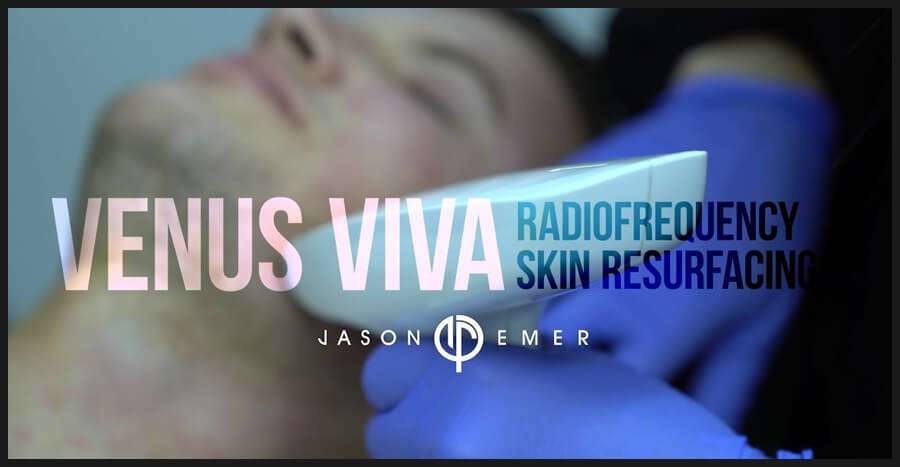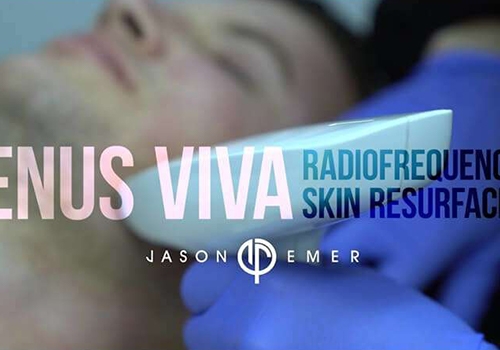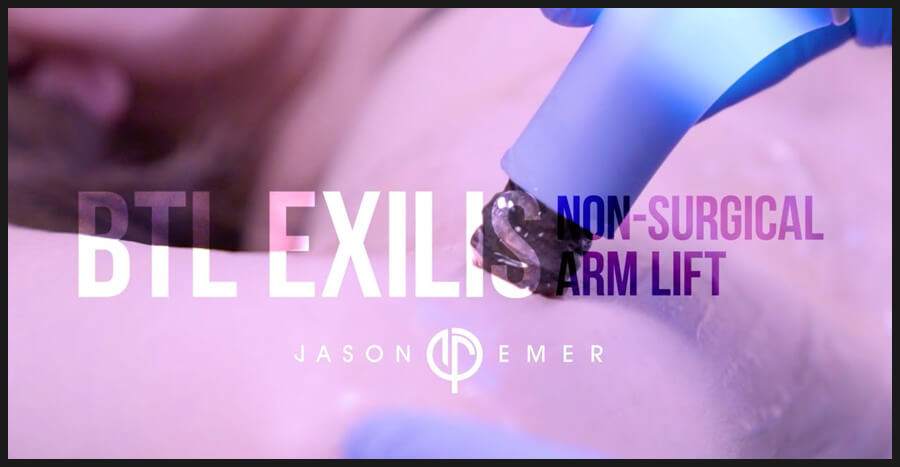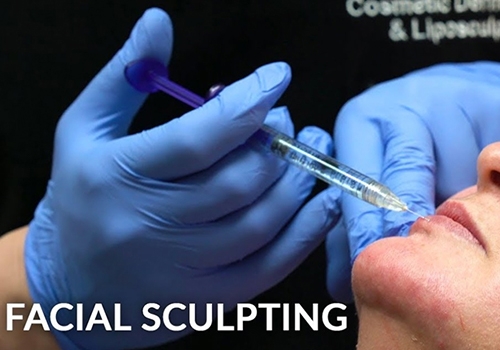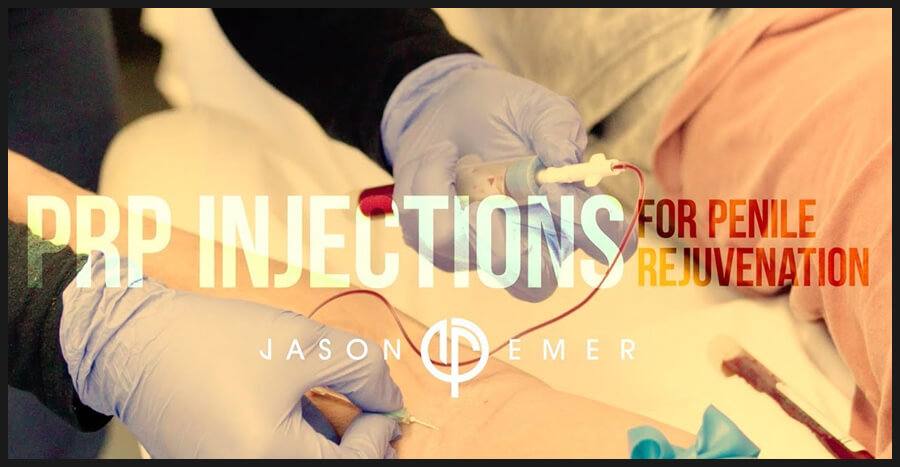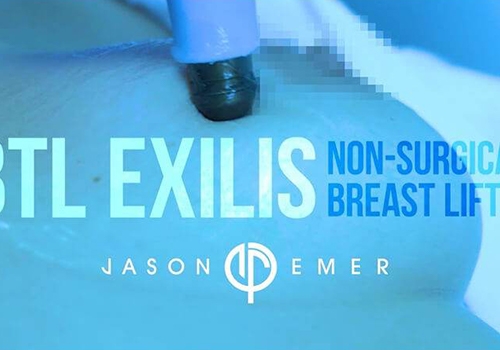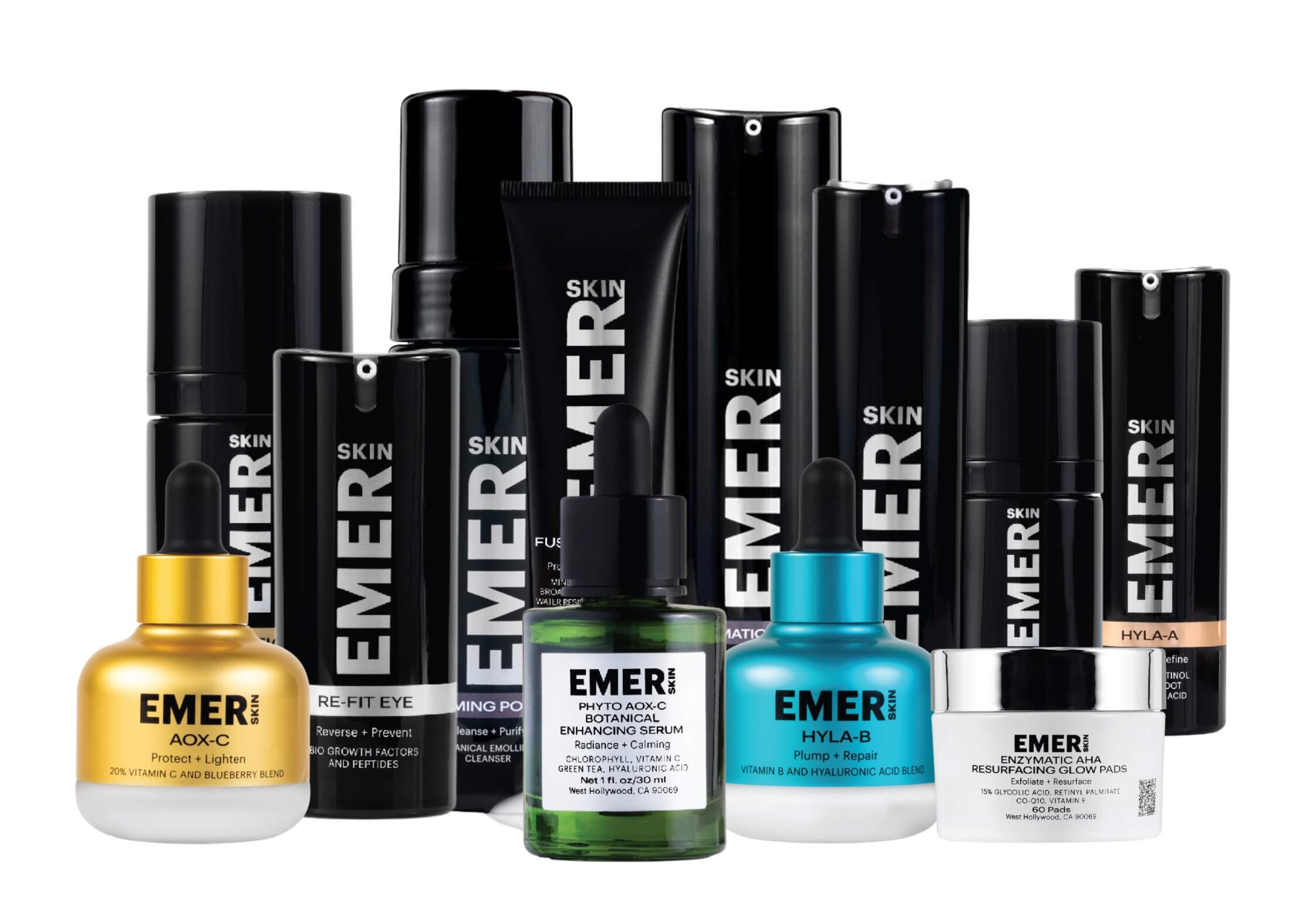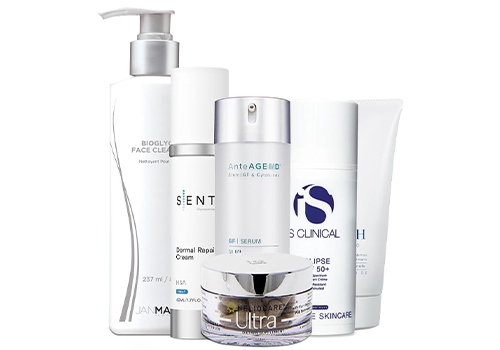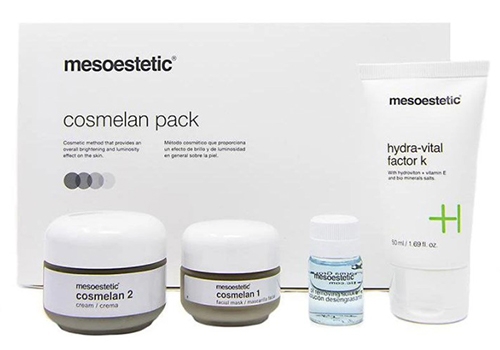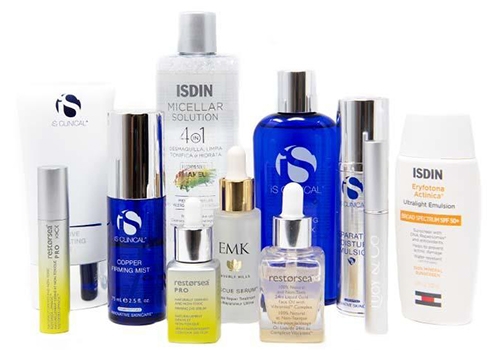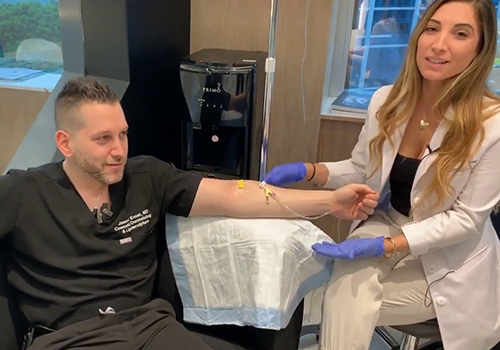SKIN TIGHTENING
Conveniently located to serve Beverly Hills, Hollywood, Los Angeles, NYC, and Miami.
Skin tightening therapy is essential for restoring and maintaining a youthful appearance. To provide the best skin tightening treatments in Beverly Hills, board-certified dermatologist and skin rejuvenation expert Dr. Jason Emer creates a unique treatment plan for each patient. With his vast experience and extensive selection of state-of-the-art technologies and devices, Dr. Emer delivers remarkable, natural-looking skin tightening effects.
WHAT IS SKIN TIGHTENING THERAPY?
Skin tightening therapy is a popular cosmetic treatment that can fight signs of aging and improve facial and body contours. In the past, skin tightening was strictly a surgical endeavor that involved pulling skin taut and excising excess skin. This method eliminated loose skin, but it was largely unsuccessful at creating natural-looking, youthful contours.
Fortunately, cosmetic technology and methodology have advanced dramatically, and there are numerous options for treating lax skin. Many modern skin tightening techniques are minimally invasive and require little downtime.
Using strategic combinations of treatments, Dr. Emer can treat mild, moderate, and severe skin laxity throughout the face and body. Dr. Emer’s advanced, multi-faceted approach to skin tightening delivers maximum improvements by:
- Replacing lost volume to fill out loose skin
- Stimulating your body’s natural collagen production
- Subtly lifting tissue to reduce sagging and smooth out wrinkles and folds
RIGHT FOR YOU?
AM I A GOOD CANDIDATE SKIN TIGHTENING THERAPY?
Patients undergoing body sculpting and fat reduction procedures are often good candidates for skin tightening therapies. Skin tightening treatments can help your skin retract to accentuate your new, slimmer body contours.
Most healthy adults who want to prevent or minimize skin laxity are good candidates for skin tightening therapy. Dr. Emer is highly skilled in a range of non-invasive, minimally invasive, and more intensive surgical skin tightening methods, so he is able to find safe, effective treatments that fit each unique patient’s needs.
PROCEDURE DETAILS
THREAD LIFTING FOR SKIN TIGHTENING
Dr. Emer can perform non-surgical facelifts, brow lifts, neck lifts, butt lifts, and even breast lifts with thread lifting. He can also improve skin laxity in the knees and elbows with thread lifting.
Thread lifts can provide immediate skin tightening, lifting, and rejuvenation of the treatment area. Thread lifting also stimulates collagen production to provide subtle, long-term improvements in skin tone.
Dr. Emer’s exceptional skill with thread lifting allows him to place threads in a way that works with your unique anatomy to achieve aesthetic, natural-looking skin improvements. For the best thread lifting results, Dr. Emer uses:
Silhouette InstaLift threads are comprised of suture material and sugar-based cones made of poly-L-lactic acid (PLLA) and poly-L-glycolic acid (PLGA). Over several weeks, the threads will dissolve, prompting your body to produce collagen, which results in tighter, stronger skin.
NovaThreads are resorbable suture threads made of polydioxanone (PDO). Depending on the treatment area and your desired outcome, Dr. Emer will choose between twisted, barbed, and smooth threads to achieve optimal lifting and tightening effects. Patients can expect to enjoy their NovaThreads results for six to nine months.
INJECTABLE FILLERS FOR SKIN TIGHTENING
Injectable fillers can replace lost volume to help fill out and lift loose skin. Dr. Emer is an expert when it comes to dermal fillers and is meticulous about selecting the optimal type of filler for the intended purpose. To achieve longer-lasting skin tightening and volume restoration, Dr. Emer often recommends Sculptra and/or fat injections over shorter-term hyaluronic-acid based fillers.
PROCEDURE DETAILS
SCULPTRA FOR SKIN TIGHTENING
Sculptra is a dermal filler and collagen stimulator made from poly-L-lactic acid (PLLA). Like other fillers, Sculptra is an effective method of replacing lost volume and sculpting aesthetic contours and has distinct skin tightening advantages over the hyaluronic acid-based (HA) fillers often used to plump lips and smooth out facial wrinkles.
With volume restoration effects that can last more than two years and its ability to boost collagen production over time, Sculptra is an ideal filler for skin tightening protocols. Sculptra aids in rebuilding the underlying structure of the skin that weakens as we age. Strengthening the skin’s inner structure helps to restore fullness in areas with mild sagging, wrinkles, and folds. Dr. Emer often combines Sculptra with laser therapy or microneedling RF treatments to maximize collagen production.
PROCEDURE DETAILS
FAT INJECTIONS FOR SKIN TIGHTENING
At Dr. Emer’s medical practice in Beverly Hills, fat grafting is often included in skin tightening protocols. Fat injections can fill hollows and sunken features to smooth and lift wrinkled, sagging, or crepey skin. Dr. Emer may recommend autologous fat grafting or Renuva synthetic fat grafting for long-lasting skin tightening and sculpting effects.
AUTOLOGOUS FAT GRAFTING – Autologous fat grafting is more intensive than other filler procedures, as fat must first be harvested from your body. For this process, Dr. Emer performs VASER liposuction, an ultrasound fat removal method that preserves the integrity of the extracted fat cells. He then purifies the fat with advanced microfiltration, enriches it with platelet-rich plasma (PRP) and growth factors from your body, and then expertly injects it to achieve your desired skin tightening results.
RENUVA SYNTHETIC FAT GRAFTING – For patients who do not have excess fat or do not wish to undergo VASER lipo, Renuva synthetic fat injections can provide minimal-downtime, long-term volume replacement for skin tightening.
PROCEDURE DETAILS
MICRONEEDLING RF TREATMENTS
Microneedling radiofrequency (RF) treatments can rejuvenate the skin’s surface and increase collagen production to improve skin tone. During a microneedling RF treatment, the device’s tiny needles create microchannels in the skin. RF energy can be delivered to deep layers of the skin via the microchannels, helping to stimulate natural collagen production and remodel the skin.
As part of your customized skin tightening treatment, Dr. Emer may include microneedling RF treatments with:
Factora
Factora
Morpheus8
Morpheus8
Endymed Intensif
Endymed Intensif
PROCEDURE DETAILS
MORE SKIN TIGHTENING
With laser skin tightening therapy, heat from infrared light (a laser) is directed under the skin. The heat from the laser causes skin to contract for subtle, yet noticeable improvements in skin laxity. Laser therapy also promotes increased collagen production.
Dr. Emer has a comprehensive collection of lasers, each with distinct skin rejuvenation benefits. He will consider many factors when selecting the optimal laser treatment for your skin. Laser skin tightening therapy options include:
NON-ABLATIVE LASERS: Non-ablative lasers like Aerolase, Laser Genesis, and Fraxel deliver heat under the skin without affecting the surface layer. Maximum skin tightening improvements are typically achieved through a series of three to six treatments.
ABLATIVE LASERS: Ablative laser devices like Erbium, Sciton ProFractional, and CO2 work on outer and inner layers of skin. On the skin’s surface, ablative lasers remove the outermost layer of dull, damaged skin cells. Under the surface, ablative lasers cause controlled thermal micro-damage to stimulate collagen production. Ablative lasers involve more downtime than non-ablative lasers, but you’ll also see far more dramatic results with one session. Tightening effects will be noticeable within two weeks.
Ultherapy is an FDA-approved skin tightening treatment that employs high-intensity focused ultrasound energy (HIFU) to address mild skin laxity. Ultherapy is safe for use throughout the face and body and requires minimal downtime. Depending on your cosmetic concerns and skin type, Dr. Emer can incorporate RF treatments, microneedling RF, Sculptra injections, lasers, and/or thread lifts to enhance Ultherapy results and support long-term improvements.
When skin laxity has progressed beyond mild sagging but is not severe enough to warrant a surgical lift, Dr. Emer may suggest treatment with an internal surgical heating device. While internal surgical heating involves more downtime than non-invasive skin tightening treatments, patients also benefit from more significant tightening effects and longer-lasting results.
Internal surgical heating is performed in an operating room while the patient is under local or general anesthesia. During the procedure, the treatment device is inserted under the skin to deliver heat directly to the underlying tissues. To achieve an aesthetic “shrink wrap” skin tightening effect, Dr. Emer provides internal surgical heating with:
ThermiRF: ThermiRF takes RF skin tightening to the next level by using a probe placed beneath the skin’s surface to deliver the RF heat. ThermiRF can be performed throughout the body, including common problem areas like the thighs, knees, buttocks, abdomen, and arms.
RENUVION: The Reunvion device sends a unique combination of RF and helium plasma energy into the subdermal tissue. In response to the energy, the affected tissues contract to visibly tighten the skin.
InMode FaceTite/BodyTite: The FaceTite and BodyTite systems can achieve dramatic improvements to facial and body contours by heating skin, connective tissue, and superficial fat deposits with RF energy.
Deep radiofrequency treatments like Thermage, BTL Exilis Ultra, and Venus Legacy send controlled RF heat through the skin’s surface to the underlying tissue. External RF treatments are a non-invasive option for collagen-stimulation and skin tightening.
THERAMGE: Thermage uses RF heat to tighten loose skin throughout the body. This no-downtime procedure encourages optimal fibroblast and collagen production processes to improve skin tone. Yearly Thermage treatments can slow and prevent signs of aging.
BTL EXILIS ULTRA: Using lighter RF heat than Thermage, Exilis Ultra can be performed two or three times per month to keep collagen production at an optimal level. Exilis Ultra patients can benefit from tighter skin and fewer wrinkles.
VENUS LEGACY: Venus Legacy uses bipolar RF technology and pulsed electromagnetic fields to promote collagen production. Dr. Emer often performs Venus Legacy after liposuction to ensure an aesthetic skin tone that enhances the patient’s new, slimmer contours.
Patients with considerable excess skin and/or volume loss may be better candidates for a surgical skin tightening approach. Surgical skin tightening can achieve dramatic improvements by removing loose skin, lifting tissue, and restoring more youthful contours.
Dr. Emer offers internal surgical heating and surgical lift procedures to address extensive skin laxity. For patients seeking comprehensive lifting, sculpting, and tightening, an HD liposuction procedure that combines fat removal and surgical skin tightening is the most transformative treatment option.
For patients with severe skin laxity, considerable excess skin, and/or advanced signs of aging, Dr. Emer and his expert plastic surgeons can perform a surgical lift to achieve optimal improvement. Surgical lifts involve excising loose, hanging skin and artfully repositioning skin and tissue to restore youthful contours. Types of surgical lifts performed by Dr. Emer and his plastic surgeons include:
- Face lift
- Neck lift
- Arm lift
- Thigh lift
- Butt lift
- Breast lift
Surgical lifts are the most invasive skin tightening approach and require a significant recovery period. However, patients also benefit from long-lasting and comprehensive improvements that cannot be accomplished with less invasive treatments.
THE DR. EMER DIFFERENCE
SKIN TIGHTENING
Dr. Emer offers an extensive selection of skin tightening therapies, so he can provide highly customized solutions for each unique patient. While each skin tightening method is effective as a stand-alone treatment, Dr. Emer’s commitment to excellence has led him to develop world-renowned, combination skin tightening protocols.
Dr. Emer’s unique and patient-tailored treatments involve strategic combinations of cutting-edge skin tightening therapies, including:
- Thread Lifting
- Injectable Fillers
- Microneedling radiofrequency treatments
- Laser skin tightening therapy
- External radiofrequency treatments
- Ultrasound-based skin tightening
- Internal surgical heating
- Surgical lift procedures

HOW MUCH DOES SKIN TIGHTENING THERAPY COST?
The price of skin tightening therapy is affected by several factors. Dr. Emer will consider the severity of your skin laxity, the size and location of the treatment area(s), and your unique anatomy to determine the optimal combination of procedures to achieve your desired outcome. Dr. Emer will discuss your treatment options and all associated costs at your consultation.
SCHEDULE A CONSULTATION WITH DR. EMER
Under the care of leading cosmetic dermatologist Dr. Emer, you can achieve visibly tighter, firmer, and more radiant skin. To experience the exceptional results and personalized attention that only Dr. Emer can provide, contact our West Hollywood office to schedule a consultation.



